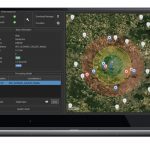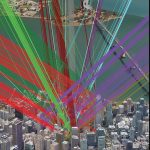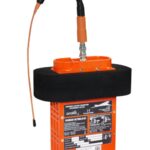Google has agreed to integrate into its mapping services geographic information system (GIS) data from the Federal Railroad Administration (FRA) that pinpoints the location of the nation’s approximately 250,000 public and private railroad crossings.
Google has agreed to integrate into its mapping services geographic information system (GIS) data from the Federal Railroad Administration (FRA) that pinpoints the location of the nation’s approximately 250,000 public and private railroad crossings.
Announced yesterday (June 29, 2015) by FRA Acting Administrator Sarah Feinberg, the agreement means that drivers and passengers will eventually be able to receive real-time audio and visual alerts of an upcoming rail crossing when a driver uses the turn-by-turn navigation feature from GNSS-enabled mapping apps on their smartphones and tablets that they are approaching a crossing. Google and the FRA already have an app for mobile devices, Railroad Crossing Locator,” that provides this information information in static form.
The agency has reportedly made similar requests of portable navigation device manufacturers TomTom and Garmin as well as digital mapbase provider MapQuest and Apple. Feinberg said that she was “incredibly grateful that Google has quickly agreed to work with us, and we are hopeful that other tech companies that develop map applications will join us too.”
For drivers and passengers who are driving an unfamiliar route, traveling at night, or who lose situational awareness at any given moment, receiving an additional alert about an upcoming crossing could save lives, according to the agency that oversees the nation’s rail system. FRA spokesman Matthew Lehner told USA Today that Google "has not given us a timeline [for when real-time alerts may be available for the app], but they have said it’s a priority,” he said.
Last year, approximately 270 people died in highway-rail collisions that were largely preventable, according to the FRA, the first time this decade in which that number has increased from the previous year.
“We know that more and more drivers today use map applications on smartphones to guide them to their destinations,” Feinberg said. “While mobile device maps and applications are trusted sources for directions and guidance, many of them do not notify drivers when they are approaching a rail crossing, or do not identify the rail crossing at all. When drivers are alerted or reminded that there is a rail crossing ahead, they may be more likely to remain alert, use greater caution, and obey the signal crossings.”
The FRA’s Rail Crossing Locator Mobile Application was developed in its current form to provide users with access to the highway-rail grade crossing database and map features from a mobile device. The tool allows users to locate crossings by USDOT Crossing ID, address, or geo-location; access inventory records submitted by states and railroads; and view crossings’ accident history.






